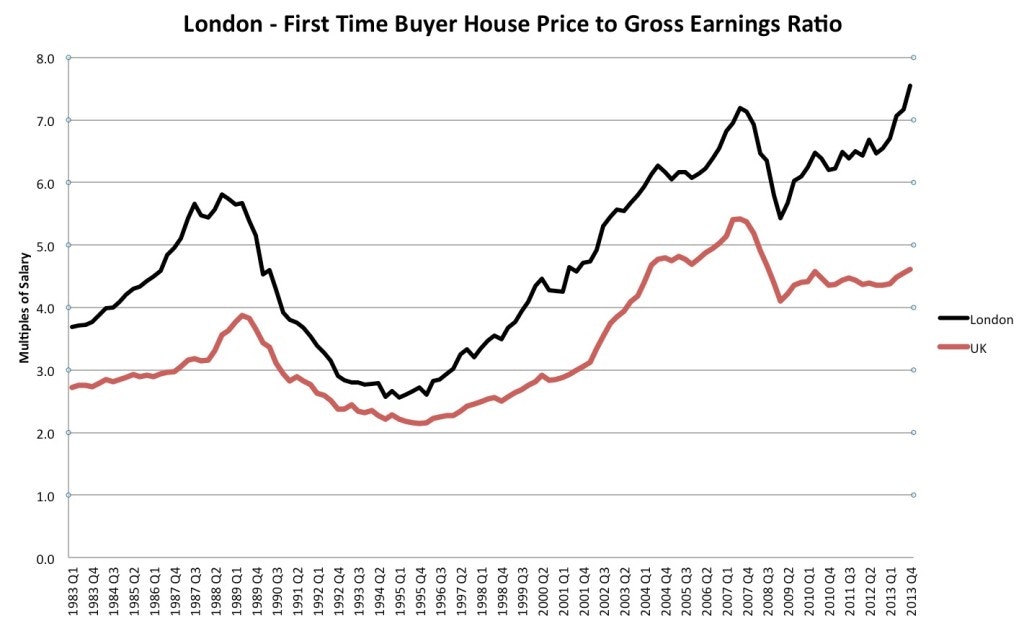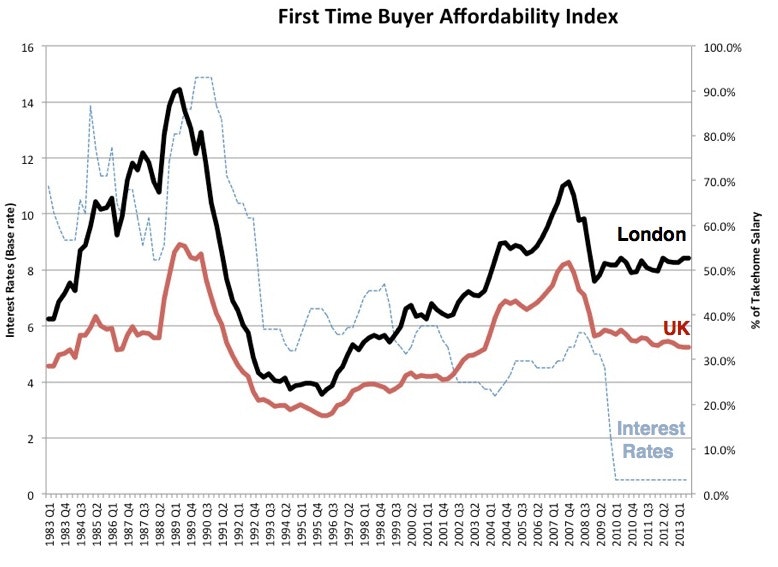Low Inflation Figures Mask a Housing Crisis

Inflation is at a four-year low, according to the Office of National Statistics. On the back of these low figures, Prime Minister David Cameron has claimed that:
“Our long term economic plan is helping provide stability and security for hard-working people.”
This is a case of claiming credit where it’s certainly not due. Inflation figures were falling because the cost of petrol was falling – something well outside of the government’s control. But at the same time, house prices have risen by 6.8% in the 12 months to January (across to the UK as a whole).
So the part of cost of living that is under government control – and which no-one can avoid – is rising many times faster than salaries. Once again, house prices are becoming increasingly unaffordable.
The chart below shows the ratio between prices of houses bought by first time buyers, and the average salaries in that area. You can see that the cost of housing is close to an all-time high (and in London, is already at an all-time high):

(Click to view full size)
The first-time buyer house price affordability index shows an even more worrying picture, with warning signs for the near future. The red and black chart below show the answer to the question: “How much of a first-time buyer’s post-tax salary goes straight on the mortgage?” In the UK overall, around 37% of a first-time buyers salary goes on the mortgage. In London it’s already over 50%. At first glance that doesn’t look too bad against the huge peaks in the late 1980s. In fact, housing almost looks reasonably affordable.
But there’s a catch. The dashed blue line below shows Bank of England interest rates (on the left hand side axis). They’re currently at their lowest level ever since the Bank of England was founded 320 years ago. As soon as they start rising, then the black and red lines will shoot up, as more and more of people’s incomes are swallowed by interest payments on their over-priced housing:

(Click to view full size)
So if you’re on a tracker mortgage, take some solace in the fact that the price of bread and biscuits is only rising at 1.7% a year. Once base rates – and your mortgage repayments – start rising, you may no longer be able to afford those luxuries in the supermarket.